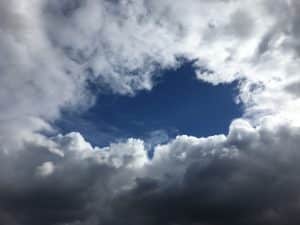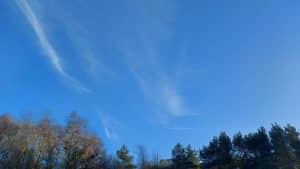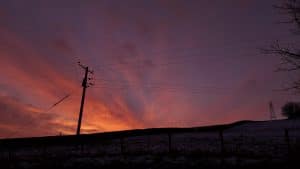

Lessons from Nature; Appreciating Clouds
28th February 2021

We think that clouds are Nature’s poetry, and the most egalitarian of her displays, since everyone can have a fantastic view of them.
Since 1 January, with a lack of options for travel and entertainment, I have kept a nature journal every day, visiting the same field to see what’s happening in the natural world. I have spotted a range of birds and noticed the subtle changes on trees and plants that show that spring is getting nearer, but at this cold and gloomy time of year, sometimes its hard to find the colour or drama I would hope for. But then I look up, and am struck by another cloud formation, different from yesterday and often mind-blowing it its size and beauty. But more than just a visual phenomena, I love that clouds can be viewed as ‘expression of the atmosphere‘s moods, and can be read like those of a person’s countenance’ (Cloud Appretiation Society). Clouds describe the weather coming, as I discovered in the growing nature diary entries:

12 January 2021. Wispy smudges in a blue sky. Apparently, these are cirrus clouds, ice crystals high up in the atmosphere, usually at the ahead of a warm weather front, indicating a change of weather is on its way.
True enough, the next day was wet and soggy

17 January 2021. A bitterly cold day with a bitter westerly wind. Streaks of clouds look scaled like a fish; I recall a piece of weather lore: ‘Mare’s tails and mackerel scales make tall ships carry low sails.’ These are cirrocumulus clouds being influenced by shifting wind directions. They appear before a low-pressure system and forecast bad weather ahead.
Two days later we were being battered by Storm Cristophe

12 February 2021. Gorgeous purple and orange sunrise early this morning. ‘Red sky at night, shepherd’s delight. Red sky in the morning, shepherd’s warning.’ More snow arrived later and still very cold.
Everyone knows this piece of weather lore, which does tend to be true as red skies in the evening, i.e. in the west, are as result of high pressure, which brings clear skies. As weather in the UK generally travels west to east, it means clear skies are on the way. However a red sky in the morning will be in the east which can mean that the high pressure has passed over and low pressure will take its place, bringing rain or storms.

So this week, why not take time to appreciate the wild, colourful, vast complexity clouds. You might find that things are starting to look up.
by Annie Berrington

